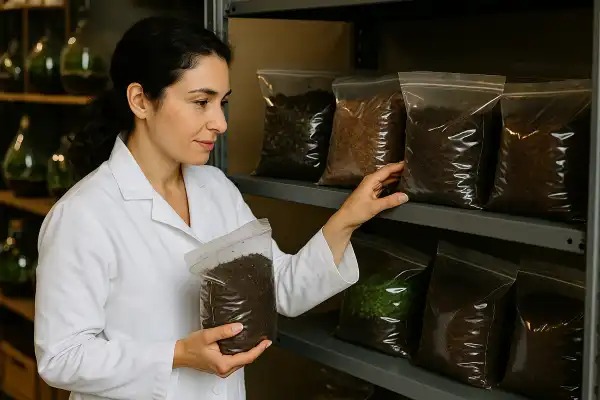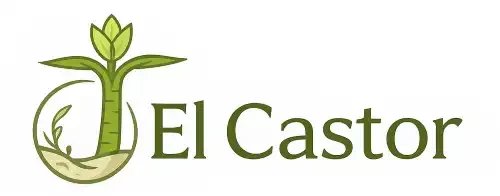Choosing which soil is best for a terrarium puzzles many plant enthusiasts because the enclosed environment creates unique challenges that regular potting soil simply can’t handle. The fascination with creating these miniature ecosystems often leads people to wonder about the foundation that will support their botanical dreams.
Building a terrarium reminds me of constructing a delicate house of cards—each layer must work in perfect harmony. The soil becomes the silent architect of your glass garden’s success, determining whether your plants will thrive or merely survive in their transparent home.
Our question of June is: Is labradorite safe to use in damp terrariums?
Which soil is best for a terrarium?
The best terrarium soil achieves the ideal balance of water retention, drainage, aeration, and support, with a light, fluffy, and well-aerated composition that prevents the waterlogging common in containers without drainage holes. The classic gold standard is the ABG Mix (Atlanta Botanical Gardens substrate), which provides a very balanced foundation for tropical terrarium plants.

Understanding terrarium soil requirements
Terrarium soil faces unique challenges that distinguish it from regular garden or houseplant soil. These encapsulated environments mimic nature on a miniature scale, fostering a delicate balance between moisture, light, and nutrients. The absence of drainage holes means water cannot escape, creating a self-contained system where excess moisture must be managed through the soil composition itself.
The ideal terrarium soil depth should be between 2 and 4 inches, providing adequate root space while maintaining proper moisture and air circulation. The soil must prevent compaction over time, as repeated waterings will leave some soils crusted and hard, impacting drainage and aeration properties.
Effective terrarium soil contains three essential components: a base material for support and water retention, structural elements for drainage and aeration, and organic supplements for nutrition. The base typically makes up about half of your overall substrate, while structural materials provide much-needed drainage and root aeration.
Commercial soil options
Several commercial options work excellently for terrarium applications. African Violet soil is recommended by Cornell University Extension as a very lightweight soil that will keep plants moist but not soggy. This specialized potting mix offers superior drainage characteristics compared to standard houseplant soil.
Houseplant soil works with most plants, besides succulents which prefer a well-drained inorganic medium. Commercial potting mixes typically contain peat moss, perlite, and vermiculite, though this option is not typically recommended since your terrarium may or may not benefit from all added ingredients these typically come with.
Aquarium soil is regular soil that has been baked to produce dry pellets with excellent drainage and water retention. The round pellets resist compaction and provide better aeration than traditional soil, though some find it challenging to plant in due to its firm texture.
DIY soil recipes for different environments
Creating custom soil blends allows precise control over drainage, nutrition, and pH levels. The classic ABG Mix contains sphagnum moss (1 part), tree fern fiber (2 parts), orchid bark (2 parts), peat moss (1 part), and charcoal (1 part).
For a more sustainable alternative, mix equal parts of coco coir soil, sphagnum moss, coarse sand, and vermiculite or perlite. Coconut husk fiber decomposes very slowly, has a neutral pH, is made from a renewable resource, and is cheap, making it an excellent base material.
To create a tropical soil, mix two parts sandy potting mix, one part perlite and one part peat moss. Alternative tropical recipes include combining one part soil-less potting mix, one part sand, and two parts standard potting soil.
Specialized soil for different plant types
Different terrarium plants require specific soil compositions. Desert soil combines three parts sandy potting soil, two parts humus, one part perlite, one part charcoal and one part grit. The charcoal helps absorb odors from decomposing organic matter while providing excellent drainage for cacti and succulents.
Bog soil mixture consists of three parts peat moss, two parts standard potting soil, one part charcoal and one part sand. The bog soil mix is generally poor in nutrients which makes it perfect for terrariums that contain carnivorous plants.
Forest soil mix is designed for terrariums that need to be kept moist and humid, made up of equal parts of peat moss, vermiculite, and loam. This composition provides adequate water and nutrients for high-humidity plants while supporting beneficial microorganisms.
pH considerations and soil amendments
Soil pH significantly impacts plant health and nutrient availability. The ideal range for most plants is 6.0 to 7.0 but some plants like blueberries and azaleas prefer more acidic soils. Peat moss is slightly acidic with a pH between 3.0-4.0, so it’s a good way to reduce the overall acidity of your soil if mixed properly.
Sphagnum moss has a neutral pH, making it a great choice for plants that prefer more neutral soil pH levels, like polka dot plants or creeping figs. To lower pH, add sphagnum moss or pine needles; to raise pH, incorporate crushed eggshells or small amounts of lime.
Coco coir has a neutral pH and is resistant to decay, making it a natural, sustainable product. However, it contains no nutrients whatsoever, so you’ll need to supplement with organic material like worm castings.
Charcoal serves multiple functions beyond pH buffering. Charcoal will add organic matter and absorb any chemicals or odors, helping maintain a healthy environment within the enclosed system.
Soil depth and layering considerations
Proper soil depth ensures optimal plant health without overwhelming the container. The soil and drainage layer should not exceed one-fourth of the height of the terrarium container to allow room for plant growth.
Use LECA (expanded clay pellets) for drainage layers due to their lightweight and high porosity, which helps manage moisture levels effectively. Put a layer of dried moss or sphagnum moss on top of your drainage layer to prevent soil from washing through and absorb excess moisture.
The substrate should be dampened before being placed in the terrarium, but water should not drip from the dampened soil when a handful is squeezed. This moisture level provides the ideal starting point for establishing your terrarium ecosystem.
Conclusion
Last year, I created a tropical terrarium for my niece’s quinceañera centerpiece, carefully mixing coco coir with sphagnum moss and a handful of orchid bark. Watching her guests marvel at the perfectly balanced mini-ecosystem reminded me why choosing the right soil foundation makes all the difference. Through years of experimentation and countless terrarium builds, I’ve learned that soil selection isn’t just about growing plants—it’s about crafting sustainable worlds that flourish long after the initial excitement fades.
El Castor is your exclusive terrarium guide.
